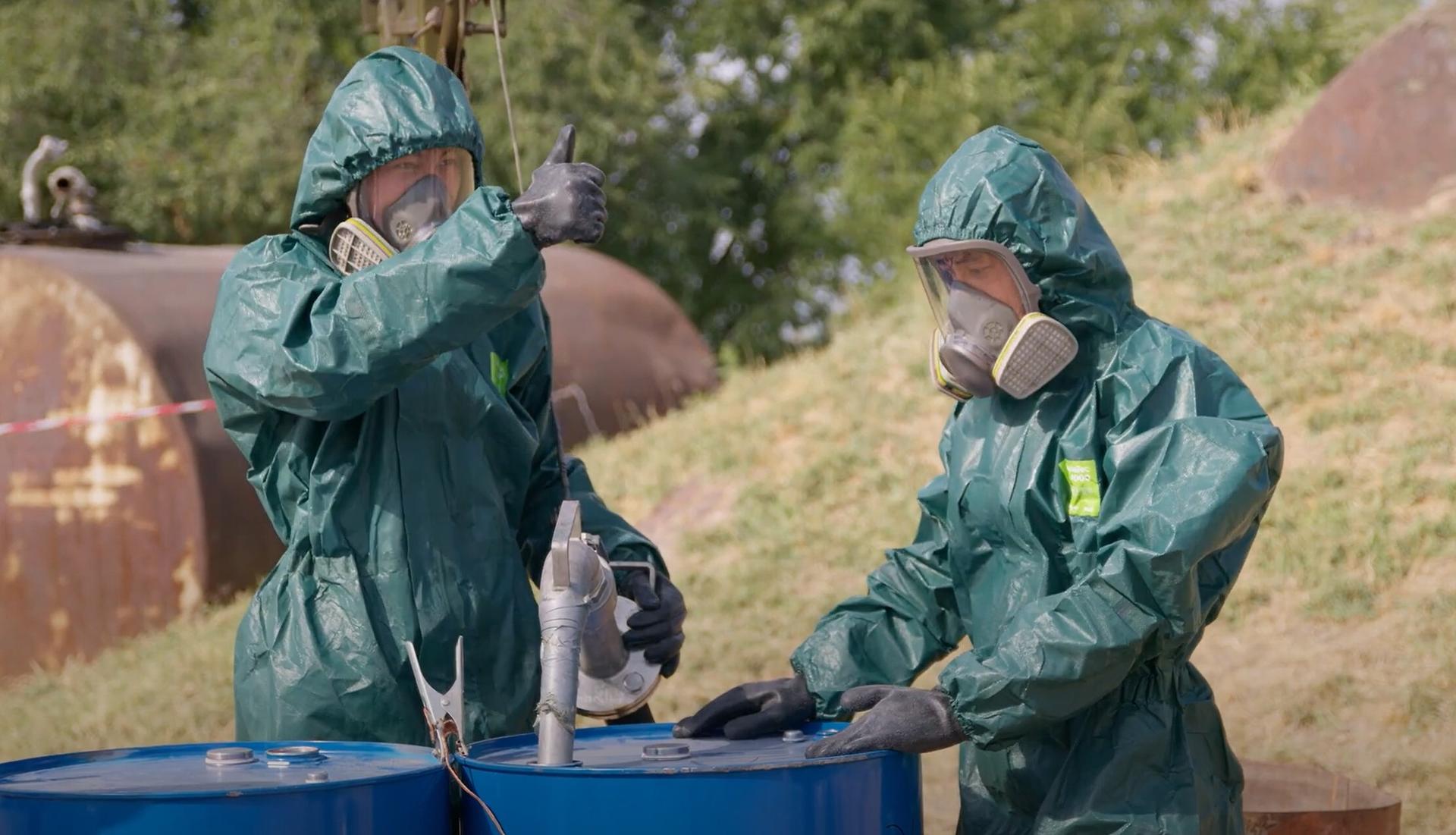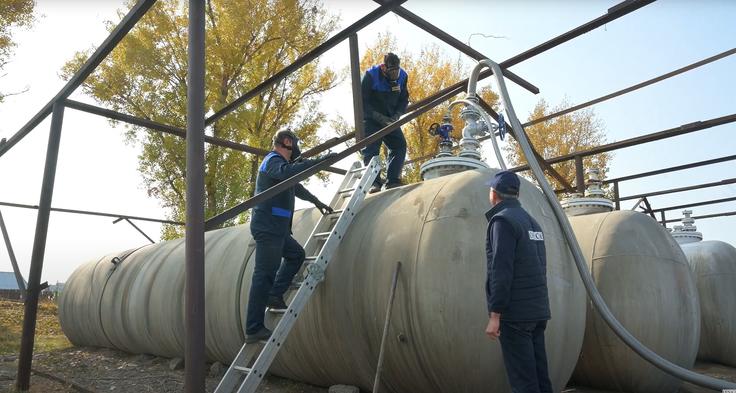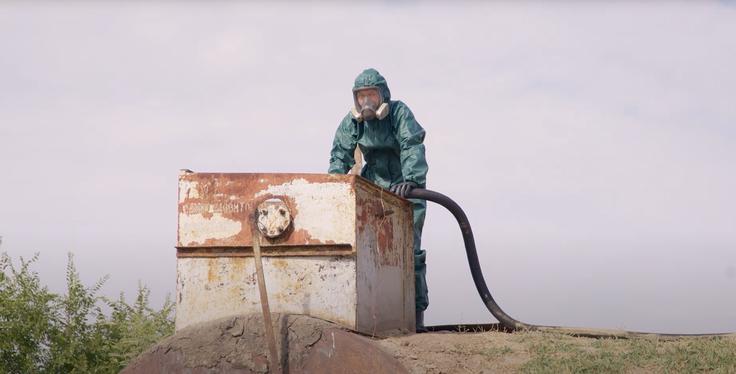-
Our work
-
Fields of work
- Arms control
- Border management
- Combating trafficking in human beings
- Conflict prevention and resolution
- Countering terrorism
- Cyber/ICT Security
- Democratization
- Economic activities
- Education
- Elections
- Environmental activities
- Gender equality
- Good governance
- Human rights
- Media freedom and development
- Migration
- National minority issues
- Policing
- Reform and co-operation in the security sector
- Roma and Sinti
- Rule of law
- Tolerance and non-discrimination
- Youth
- Field operations
- Projects
-
Meetings and conferences
- Summit meetings
- Review Conferences
- Ministerial Council meetings
- Plenary meetings of the Permanent Council
- Plenary Meetings of the Forum for Security Co-operation
- Security Review Conferences
- Annual Implementation Assessment Meetings
- Economic and Environmental Forum
- Economic and Environmental Dimension Implementation Meetings
- Human rights meetings
- Media conferences
- Cyber/ICT security conferences
- Conference of the Alliance against Trafficking in Persons
- Gender equality conferences
- Annual OSCE Mediterranean conferences
- Annual OSCE Asian conferences
- Partnerships
-
Fields of work
-
Countries
- All
-
Participating States
- Albania
- Andorra
- Armenia
- Austria
- Azerbaijan
- Belgium
- Belarus
- Bosnia and Herzegovina
- Bulgaria
- Canada
- Croatia
- Cyprus
- Czechia
- Denmark
- Estonia
- Finland – OSCE Chairpersonship 2025
- France
- Georgia
- Germany
- Greece
- Holy See
- Hungary
- Iceland
- Ireland
- Italy
- Kazakhstan
- Kyrgyzstan
- Latvia
- Liechtenstein
- Lithuania
- Luxembourg
- Malta
- Moldova
- Monaco
- Mongolia
- Montenegro
- The Netherlands
- North Macedonia
- Norway
- Poland
- Portugal
- Romania
- Russian Federation
- San Marino
- Serbia
- Slovakia
- Slovenia
- Spain
- Sweden
- Switzerland
- Tajikistan
- Türkiye
- Turkmenistan
- Ukraine
- United Kingdom
- United States of America
- Uzbekistan
- Asian Partners for Co-operation
- Mediterranean Partners for Co-operation
-
Structures and institutions
- Chairpersonship
-
Secretariat
- Secretary General
- Office of the Secretary General
- Conflict Prevention Centre
- Transnational Threats Department
- Office of the Special Representative and Co-ordinator for Combating Trafficking in Human Beings
- Office of the Co-ordinator of OSCE Economic and Environmental Activities
- Gender Issues Programme
- Opportunities for Youth
- Department of Human Resources
- Department of Management and Finance
- Office of Internal Oversight
- Documentation Centre in Prague
- Institutions
-
Field operations
- Presence in Albania
- Centre in Ashgabat
- Programme Office in Astana
- Programme Office in Bishkek
- Mission to Bosnia and Herzegovina
- Programme Office in Dushanbe
- Mission in Kosovo
- Mission to Moldova
- Mission to Montenegro
- Mission to Serbia
- Mission to Skopje
- Project Co-ordinator in Uzbekistan
- Closed field activities
- Parliamentary Assembly
- Court of Conciliation and Arbitration
- Organizational structure
- About us

Story
Dealing with the Cold War’s toxic legacy
- Date:
- Source:
- Forum for Security Co-operation
On the outskirts of Bishkek, in Novopavlovka, residents had lived for decades with a silent threat lurking just 100 meters from their homes. In this small Kyrgyz town were rusting containers that held more than 200 tonnes of Soviet-era rocket fuel components. Highly corrosive and toxic substances that became more dangerous with each passing year.
The chemicals were designed for missiles that were never launched, for a war that never came. A legacy of the Cold War that continued to pose a very real threat, growing more acute as the aging containers slowly corroded. On hot summer days, a leak could send toxic fumes drifting toward homes and schools. Underground, any spill could contaminate the groundwater on which families depended.
This story illustrates how our well-being and safety depend on far more than our traditional understanding of security as based on police and soldiers.
True security encompasses our environment, our health, and the invisible threats that can harm communities just as surely as any military conflict.
The rusting containers of toxic chemicals threatening Novopavlovka's 21,000 residents represented a form of insecurity that required a different kind of response.
Thinking comprehensively has been at the centre of the OSCE's work since 1975, when the Helsinki Final Act established a comprehensive approach that recognized the interconnected nature of security’s politico-military, economic, environmental and human aspects.
Mélange and Samin, two dangerous rocket fuel components, exemplify this reality. Designed during the Cold War as part of rocket fuel systems intended to keep populations safe through deterrence, these substances ultimately added to the sum of all fears. The very chemicals meant to protect people became a deadly threat to the communities living in their shadow.
Mélange is a highly toxic liquid oxidant rocket propellant component composed primarily of nitric acid and dinitrogen tetroxide. At the end of the Cold War, a number of states including Ukraine, Kazakhstan, Kyrgyzstan, and others, were left with large quantities of mélange, which had been used in short- and medium-range missiles. Samin, another toxic component, also remained stockpiled across the region.

Experts remove Melange from Novopavlovka in 2022.
The danger these substances posed only grew with time. As mélange decomposes it becomes increasingly unstable, producing nitric acid and nitrogen tetroxide. When the containers housing these deadly oxidizers begin to erode, they pose a grave threat to human life and the environment. Large leaks can produce toxic clouds that could drift to residential areas, contaminating the environment and causing long-term pollution of the groundwater.
Over the last two decades, the OSCE has worked with participating States to eliminate these toxic rocket fuel components. This was done by either neutralizing them, or by securely transferring them to specialized chemical facilities where they can be safely converted to industrial products, such as agricultural fertilizers, or through incineration in specialized disposal facilities.
The OSCE began its work on this environmental security challenge in 2002 with the successful clean-up of Georgia's stockpiles. Since then, what began as a single project has grown into the largest OSCE donor-financed activity to date.
OSCE mélange and rocket fuel component disposal projects have been successfully implemented in Albania, Armenia, Belarus, Bulgaria, Georgia, Kazakhstan, Kyrgyzstan, Montenegro, and Ukraine. Each project required careful planning, international co-operation, and meticulous safety protocols. The toxic substances had to be transported under close monitoring, often across international borders, to facilities capable of safely processing or destroying them. The OSCE was key in resolving these issues and easing international co-operation.
For the people of Novopavlovka, the threat finally began to lift in 2021. That November, a ceremony marked the removal of the last batch of mélange from the area—more than 150 tonnes in total. The deadly oxidizer that had threatened their community for decades was finally gone.
But the work wasn't finished. While the mélange had been removed, 55 tonnes of Samin still remained in those same deteriorating containers.
October 2024 marked the removal of the final 55 tonnes of Samin from Novopavlovka. The Samin was transported by air to Germany for incineration in a specialized disposal facility. With this final removal, Kyrgyzstan was declared free from toxic rocket fuel remnants, shedding this toxic legacy of the cold war.

An expert removes the remaining Samin from Novopavlovka in 2024
Speaking of the collaboration between Kyrgyzstan’s armed forces and the OSCE, Colonel Emil Osmonov, who was Deputy Minister of Defence when the operation was completed emphasized that “I am confident that the disposal of the rocket fuel component Samin will significantly reduce the risk of an environmental emergency and enhance the safety of the local population”.
Completing this work represents more than just the removal of dangerous chemicals. It demonstrates how comprehensive security addresses threats that don't respect borders and require international co-operation to resolve them.
In Novopavlovka, a community can finally breathe easier, knowing that the silent threat that shadowed their lives for decades has been eliminated at last.
OSCE Impact
Discover more stories about how the OSCE improves lives.